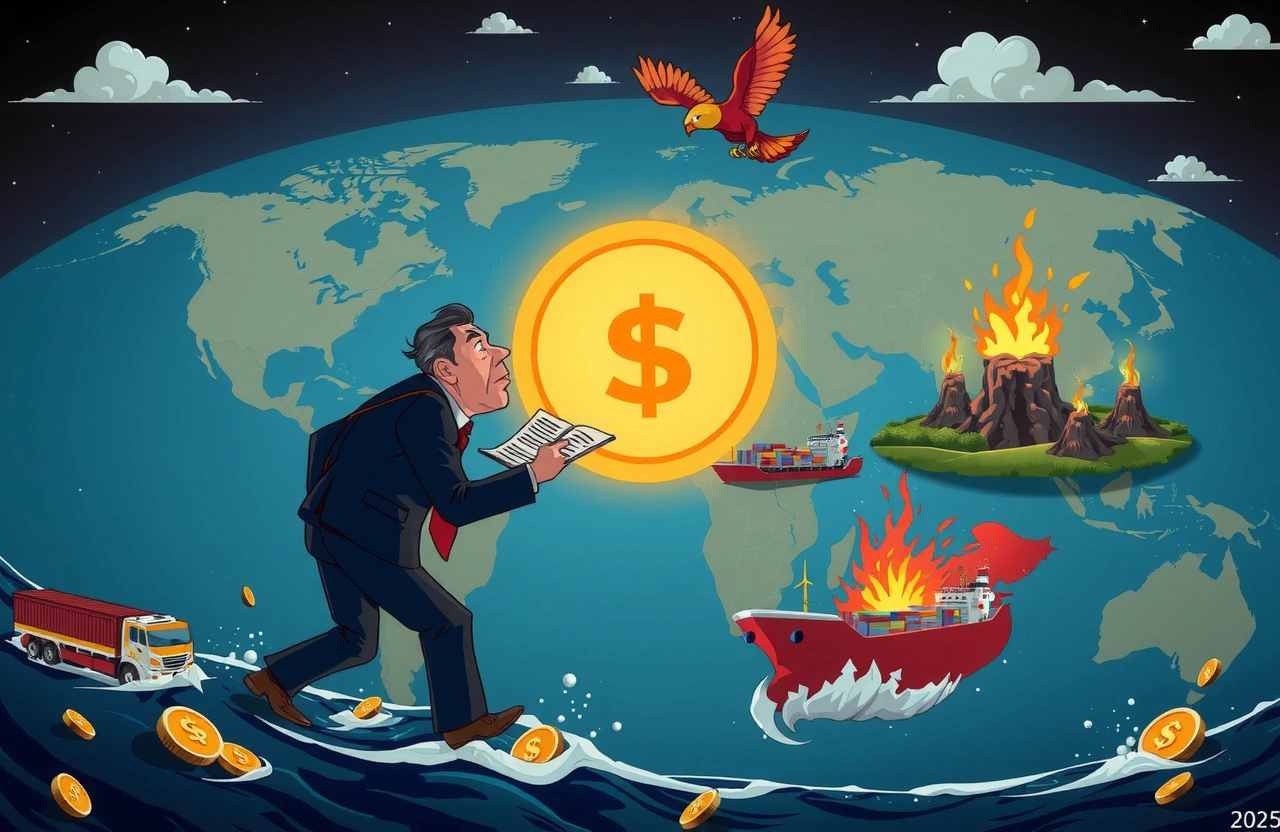The Tectonic Plates of Global Finance Shift
Just five years ago, the World Bank projected steady 3% annual growth for the global economy until 2030. Today, that forecast lies in tatters as nations scramble to adapt to unprecedented financial turbulence. Supply chain fractures, resource scarcity, and currency volatility have accelerated an unavoidable economic realignment – a fundamental rewiring of international trade relationships that’s forcing governments to choose between globalization and sovereignty. Consider these recent developments:
– Global foreign direct investment dropped 12% in 2024’s first quarter according to UNCTAD
– Export restrictions on critical minerals expanded 300% since 2021 (WTO data)
– Currency swap agreements between non-aligned nations tripled in the past 18 months
This isn’t a temporary market correction but a structural reshaping of economic power blocs. Nations that cling to old models risk being swept away by 2025’s financial currents.
The Great Resource Reconfiguration
Energy Markets in Transition
The sunset of fossil fuel dominance now coincides with sunrise for critical mineral markets. As renewable infrastructure demands explode, lithium reserves have become the new oil fields. Chile, holding 42% of global lithium reserves according to the US Geological Survey, has renegotiated 17 trade agreements with battery manufacturing nations since 2023.
Emerging Energy Strategies:
– Germany committing €100bn to rare earth processing facilities
– Japan securing seabed mining rights across Pacific EEZs
– Gulf states redirecting oil revenues toward hydrogen corridors
Food Security as Geopolitical Weapon
The Ukraine grain dispute demonstrated how agricultural exports transform into strategic leverage. Nations are adopting buffer stock policies unseen since the Cold War. Consider India’s National Food Security Mission now requiring 150-day grain reserves – triple pre-pandemic levels.
Technological Sovereignty: The New Arms Race
The semiconductor shortage exposed dangerous dependencies driving today’s semiconductor diplomacy. Taiwan accounts for over 60% of global chip foundry revenue, compelling nations to pursue alternatives.
The Silicon Shield Strategy
Leading manufacturing hubs now view technology independence through three lenses:
– Materials: Securing upstream supply (gallium, germanium)
– Processing: Onshoring fabrication plants
– IP Control: Restricting knowledge transfers
Witness America’s CHIPS Act incentives pulling Asian giants like Samsung into Arizona manufacturing hubs. Meanwhile, South Korea invests $450bn in developing next-gen materials like gallium nitride.
Digital Currency Dominance
Over 130 nations now explore CBDCs threatening the dollar’s primacy. China’s digital yuan processed $250 billion transacted value in 2024’s first quarter.
Bloc Formation Over Globalization
The unilateralism era ends as nations cluster into transactional alliances. Unlike 20th-century ideological blocs, these groupings revolve around resource complementarity and payment mechanisms circumventing dollar systems.
Emerging Economic Coalitions
Key alliances taking shape:
– BRICS+ Logistics Corridor: Connecting member ports via rupee/real settlements
– US-EU Critical Minerals Club: Coordinating subsidies for member states
– ASEAN Food Circle: Establishing buffer reserve sharing systems
Regional Currency Realignment Effects
The trend manifests clearly in currency markets where bilateral swap lines between non-USD partners jumped 200% since 2021. Expect this economic realignment to accelerate as:
– Petroyuan usage triples in Saudi oil transactions
– ASEAN local currency frameworks bypass SWIFT
– African Continental FTAs employ pan-African payment systems
Climate Economics: Burden or Catalyst?
Extreme weather now dictates budget allocations from Zurich to Jakarta. Nations face the climate dilemma:
– Adaptation Costs: Caribbean nations spending 15% GDP on flood defenses
– Strategic Relocations: PNG plans moving coastal populations inland
– Economic Opportunities: Kenya leverages geothermal assets to attract data centers
The Green Industrial Complex
Paris Agreement commitments become industrial strategy:
– EU Carbon Border Tax redirecting manufacturing flows
– Africa becoming battery metals processing hub
– Fire-proof construction materials driving Canadian exports
Workforce Realignment Dynamics
Today’s 5.3% global unemployment hides radical labor redistribution:
– Germany actively recruits Vietnamese engineers through skill-specific visas
– Australia designs agricultural visas for climate-displaced Pacific islanders
– Mexico repositions factories toward US manufacturing reshoring
Countries with adaptive vocational training programs outpace competitors – workers transitioning to green tech roles within their economies.
The Strategic Playbook for 2026 and Beyond
Success demands abandoning rigid economic orthodoxies. Singapore earns attention through pragmatic policy innovation:
– Flexible Alliances: Simultaneously strengthening US and China ties
– Strategic Stockpiling: Creating national reserves for AI-related materials
– Scenario Planning: Simulating energy price shocks via Climate Tension Index
The Priority Matrix
Governments must assess vulnerabilities through three lenses:
1. Resource Criticality: What materials threaten industry if disrupted?
2. Logistic Resilience: Are transport routes defensible?
3. Technological Maturity: Can innovations offset shortages?
Five Action Steps for Policymakers
Implementing realignment strategy requires:
– Develop sovereign wealth funds targeting strategic assets
– Deploy AI early-warning systems for supply disruptions
– Secure water rights through bilateral agreements
– Build redundant trade corridors like India’s Suez alternative
– Create skill passport programs for adaptable labor migration
As economic plates continue shifting, nations accepting permanent volatility outperform those seeking stability. Identify key sector partnerships before competitors. Start mapping supply origins for indispensable inputs. Begin bilateral payment channel negotiations. Every nation’s playbook differs – develop yours now before the tides shift again.



